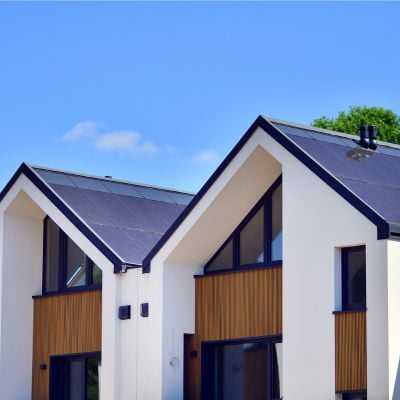The real middle class
Pew Research Center defines the middle class as a household with income that is at least two-thirds of the U.S. median income to double the median income. Based on government data for 2022, this would imply a range of incomes from $56,600 to $169,800.
As of 2023, 51% of American households fit into this category.
Another study from Gallup found that 54% of Americans would describe themselves as middle class, so it seems most people are pretty self-aware of where they fall on the income spectrum.
But, most Americans might not be aware that this cohort of middle-income earners is getting squeezed.
Invest in real estate without the headache of being a landlord
Imagine owning a portfolio of thousands of well-managed single family rentals or a collection of cutting-edge industrial warehouses. You can now gain access to a $1B portfolio of income-producing real estate assets designed to deliver long-term growth from the comforts of your couch.
The best part? You don’t have to be a millionaire and can start investing in minutes.
Learn MoreSqueezed middle
The share of the American population that fits into the middle-class category has been shrinking for the past five decades, according to Pew Research.
Roughly 61% of households across the country were part of this cohort in 1971 — a full 10 percentage points higher than the recent 51% rate.
American families are being increasingly pushed to opposite ends of the income spectrum.
From 1971 to 2023, the share of U.S. households in the lower-income bracket grew from 27% to 30%, while those in upper-income households increased from 11% to 19%.
This trend may be a reflection of growing income inequality across the country. And many families feel like they’re on the brink of falling into a lower category.
A recent survey by the National Foundation for Credit Counseling (NFCC) found that 53% of U.S. adults feel like they can’t make financial progress and 48% say they are “constantly treading water financially.”
For those respondents, it may take just one unexpected expense — or loss of income — to set them back.
Are you at risk?
If you and your family are in the middle-income category and worried about falling behind, there are ways to cement your position.
Reducing debt, especially consumer debt, could be a great way to secure yourself financially. In 2024, there were 494,201 personal bankruptcy filings in the U.S. — over 60,000 more than the previous year, according to Debt.org.
By reducing your debt burden, you can mitigate the risks of bankruptcy and reduce the monthly cost burden of servicing the debt.
Another way to secure your position is to have an emergency fund that can cover your living expenses if you suddenly lose income.
A six-month emergency fund can give you enough time to find a new job or different source of income without putting your family’s living standards at risk.
Finally, boosting your income to the upper-end of the spectrum could help you secure your middle-class lifestyle.
Launching a side gig or finding a passive income opportunity could help you get close to or even surpass the $169,800 household income threshold for upper-class status. Not only does this give you more financial flexibility, but it also puts a protective buffer on your current lifestyle.
This 2 minute move could knock $500/year off your car insurance in 2025
OfficialCarInsurance.com lets you compare quotes from trusted brands, such as Progressive, Allstate and GEICO to make sure you're getting the best deal.
You can switch to a more affordable auto insurance option in 2 minutes by providing some information about yourself and your vehicle and choosing from their tailor-made results. Find offers as low as $29 a month.







